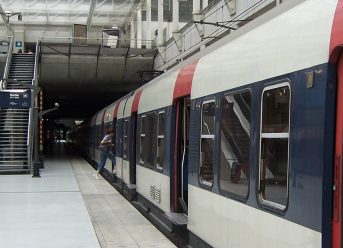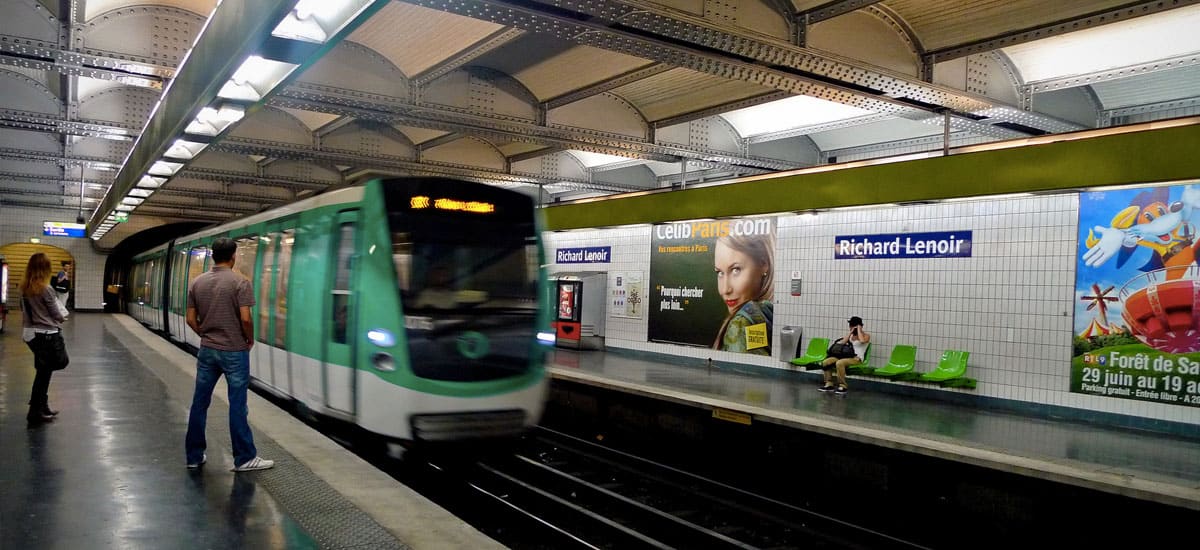
The underground train network in Paris is called the Metro (which is short for Métropolitain de Paris). The Metro has 380 stations so it is an excellent way to get around to any part of the city. In fact, you’re never more than a few minutes walk from a station.
Furthermore, the Metro is very affordable, easy to navigate once you use it a few times, and it’s been voted the best public transportation in the world.
Note: The Metro has a lot of stairs and very few elevators. If you have a lot of luggage or other mobility issues you may want to find alternate transportation.
Quick Facts
- Buy a Navigo Easy Travel Card: Paper metro tickets are being replaced by a rechargeable, contactless ‘Navigo Easy’ travel card (paper tickets will be totally phased out by 2025). The Navigo Easy cards cost 2 Euros and are sold at most stations on the Paris metro stations and approved shops. These cards can be recharged inside the stations. You can also pay via your phone if you download the Bonjour RATP app.
- You can also buy Monthly or Weekly Navigo Packages.
- Single Ride: €2.10
- Pack of 10 Single Rides: €16.90 (this is usually the best deal)
- Operating Hours: 05:30 am – 01:15 am (02:15 am on Friday and Saturday nights).
- Caution: There are a lot of stairs and long walkways so carrying a lot of luggage can be difficult.
Finding A Metro Station
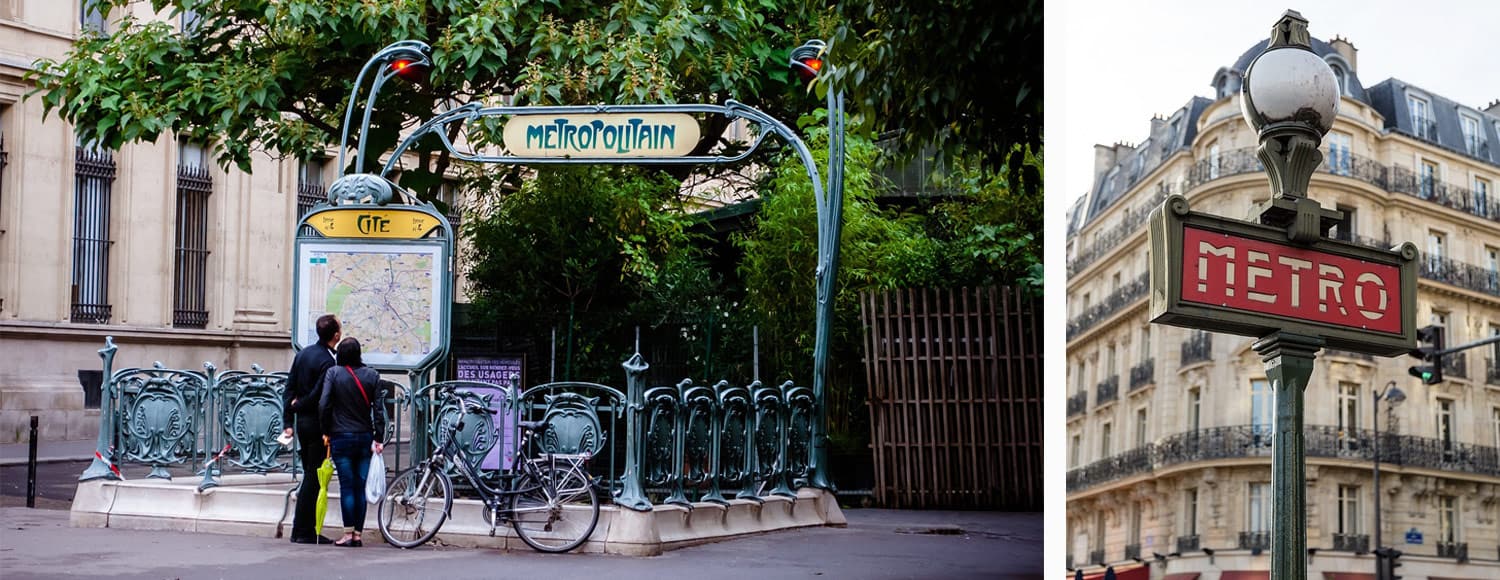
As previously stated, the Paris metro system is massive so you’re rarely more than a few minutes away from a station. Each station is well-marked with either a decorative art nouveau “Metropolitan” sign or a red “Metro” sign.
Google Maps does a good job of helping you find the nearest Metro stop and planning your full route.
Travel Tip: Having reliable high-speed data for your phone is super helpful when it comes to navigating Paris. Here are a few articles I’ve written to help you get cheap mobile data in France: Guide To Mobile Data Plans and Smartphone Phones in Europe, How To Buy A SIM Card and Mobile Data Plans in Europe, and Guide To Buying SIM Cards and Mobile Data Plans in France
Paris Navigo Easy Pass
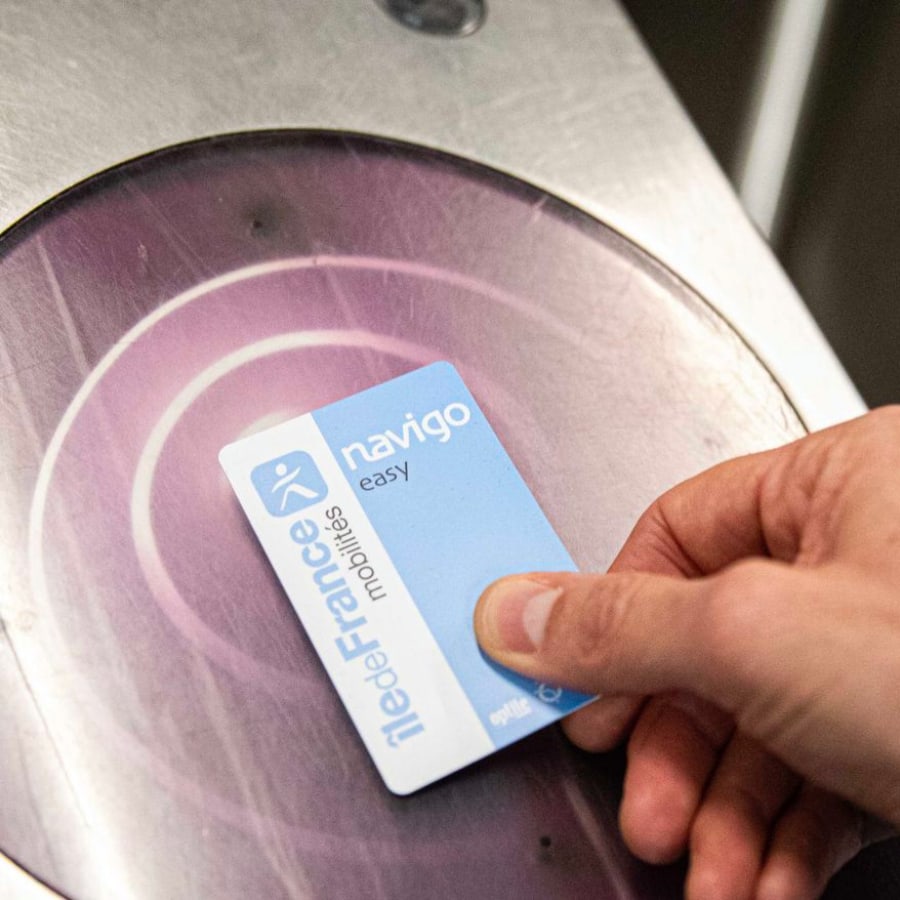
The Paris Navigo Easy is a public transportation pass for Paris. This contactless, reloadable pay-as-you-go travel card allows passengers to ride the city’s buses, metro, trams, and RER.
One of the biggest advantages of the Paris Navigo Easy is its flexibility. The card can be loaded with individual tickets or weekly/monthly passes. The card is also rechargeable, so users can easily add more funds as needed. In addition, the Paris Navigo Easy is reusable and valid for 10 years.
You can also pay with your phone by downloading the Bonjour RATP app.
Another advantage of the Paris Navigo Easy is its convenience. The card can be used on all forms of public transportation in Paris, making it a one-stop solution for travel needs. Passengers simply need to tap the card at the turnstile to enter the metro or bus and the fare will automatically be deducted.
| t + contactless | Prices |
|---|---|
| Single Ride | €2.10 |
| Bundle of 10 Rides | €16.90 |
| Bundle of 10 Rides (discounted) | €8.45 |
If you want to go outside of the city center (zones 1-2) to visit places like La Défense, Versailles, Disney, Fontainebleau, etc. then you’ll need to buy a “top-up ticket” that adds a little extra to your ticket.
Paper Paris Metro Tickets
Paper metro tickets are being phased out so you might consider buying the Paris Navigo Easy pass. But for now, you can still use these small cardboard tickets that you feed through the turnstiles. A single ticket will get you anywhere in the Metro network—whether it’s a single stop or 30 stops with multiple line changes.
In fact, the metro, bus, and tram all use the exact same ticket. It also works on the RER trains that run within the city (however, they won’t work on the RER if you travel outside the city).
Paris Visite Travel Pass
There is also the Paris Visite Pass. These unlimited day-passes and Multi-Day Passes are aimed at tourists and can be a good deal if you take multiple rides every day.
| Zones 1 to 3 (Paris only) | Adult | Child (4-11 years old) |
|---|---|---|
| Days | Price | Price |
| 1 | €13.55 | €6.75 |
| 2 | €22.05 | €11 |
| 3 | €30.10 | €15.05 |
| 5 | €43.30 | €21.65 |
| Zones 1 to 5 (Greater Paris area) | Adult | Child (4-11 years old) |
|---|---|---|
| Days | Price | Price |
| 1 | €28.50 | €14.25 |
| 2 | €43.30 | €21.65 |
| 3 | €60.70 | €30.35 |
| 5 | €74.30 | €37.15 |
If you’re visiting for an extended period of time there are week passes (which must start on a Monday), monthly passes, and year passes.
Where To Buy Paris Tickets and Passes
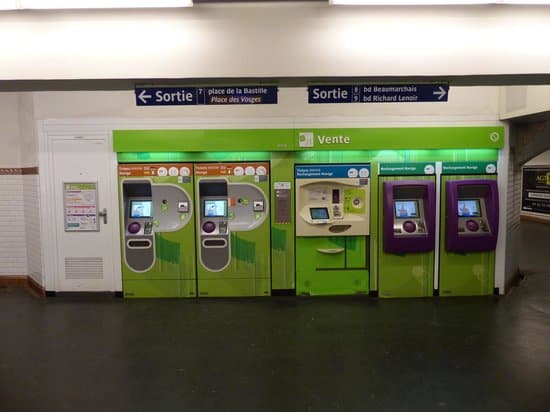
You can buy tickets and passes from just about any Metro station. Almost every station should have a ticket window or automated ticket vending machines.
Note: Some stations have smaller auxiliary entrances that may not have a ticket window or machines. If this is the case, you’ll need to find the main entrance to the station.
The machines are all in English. All will take coins. Most will take American Chip-n-Pin debit cards. Some will take paper money. The worker at the ticket window may not speak English, but they can take cash, credit/debit (even without the Chip), and coins.
How To Use The Metro
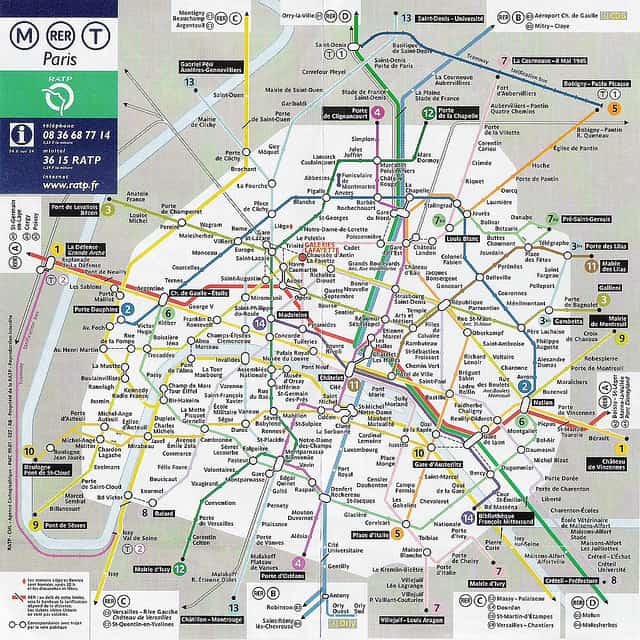
The Metro has 380 stations, 16 lines, and over 130 miles of track, so it’s safe to say that the city revolves around the Metro. This is why you’ll want to learn how to use it during your visit to Paris.
Luckily, the Metro is fairly straightforward and it’s easy to navigate once you’ve used it a few times.
Hours and Frequency
The Metro opens at 5:30 am and the last trains depart the station around 12:40 am Sunday through Thursday and until 2:15 am on Friday and Saturday.
Trains are frequent so you should rarely have to wait more than four or five minutes. However, trains are less frequent late at night so waits can be closer to 10 minutes.
Get a Map (or Use Google Maps)
I recommend picking up a physical Paris Metro map—there are free maps at the ticket window of most stations. You should also use Google Maps (or a different Paris Metro app) to help you navigate your journey.
Each station will have a large map of the entire Metro but it’s best to have a map.
Having reliable high-speed data for your phone is super helpful when it comes to navigating the Paris metro. Here are a few articles I’ve written to help you get cheap mobile data in France: Guide To Mobile Data Plans and Smartphone Phones in Europe, How To Buy A SIM Card and Mobile Data Plans in Europe, and Guide To Buying SIM Cards and Mobile Data Plans in France
The Turnstile and Your Ticket
If you’re using the contactless Navigo card, simply tap the card on the card reader and walk through. If you’re using a paper ticket, place the ticket (magnetic strip facedown) into the ticket slot at the turnstile. It will take the ticket and then spit it back out at you.
Keep your ticket because workers randomly check tickets (they hide around the corner). If you don’t have a ticket they’ll fine you between €25-€50.
You can basically ride the Metro as much as you want and transfer as much as you want on a single ticket. However, once you leave the exit turnstiles you’ll need a new ticket to get back in.
Navigating The Metro
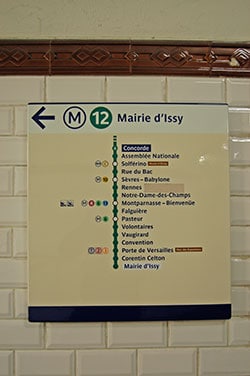
The Metro has very good signage so just keep following the signs to find your train.
Each Metro line is named with a number (1 through 14) and a color.
The direction the train is traveling is indicated by the final stop (Termini) on that line. For example, the two ends of Line Two are Porte Dauphine and Nation. On one platform the train is traveling in the direction of Porte Dauphine station and on the opposite side of the track, the train is traveling in the direction of Nation station.
There are printed signs at each station that show all the stops along the line. Also, there are electronic monitors on the platform that show when the next train is due to arrive.
Don’t worry if you get on a train traveling in the wrong direction because you can get off at the next stop and go back.
Paris Metro Safety
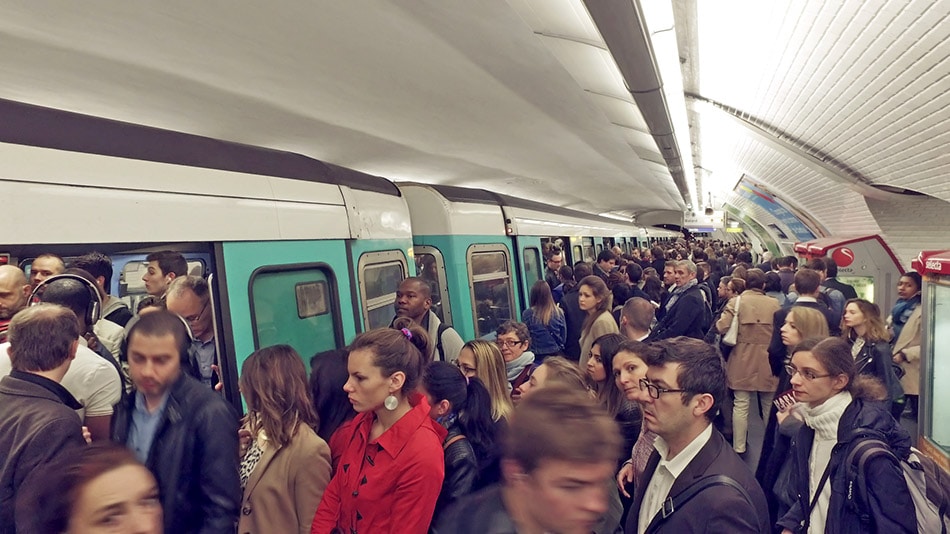
The only thing you need to worry about on the Metro is pickpockets. They are fairly active (just as in any large city) so be vigilant—wear your bag/purse on your front on crowded trains and make sure it’s zipped or secured.
Pickpockets are also very active in the train stations and they like to target people with lots of luggage since they’re already distracted by all their bags.
Pickpockets (they typically work in groups of 2-6+) like to shove themselves onto overcrowded metro cars at the last minute. This creates a distraction. Sometimes they jump out of the car before the doors close — leaving the victim stuck inside.
Another hot item is smartphones. It’s a good idea to keep the phone hidden away whenever the doors are open because thieves will grab your phone right as the doors are about to close. Also, don’t walk through the metro with your phone out because a bunch of kids might come up to you, grab your phone, and all run away. It happens all the time—to tourists and locals alike.
Read my guide to Avoiding Pickpockets in Europe for more advice.
More Tips For Using The Paris Metro
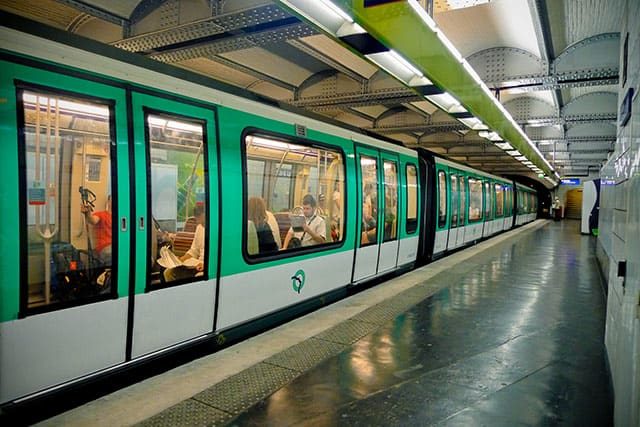
- Paris is best experienced on foot so only use the Metro if you’re short on time or traveling long distances.
- The older trains don’t have automatic doors so you’ll have to open them manually.
- New trains have electronic route displays so you know exactly what stop is next. Older trains just have a printed route so pay a little more attention.
- During rush hour and at super popular tourist stops, the train can get extremely crowded. If the train is jam-packed, you might want to wait for the next train since it’s probably coming in two minutes.
- The Metro does get very crowded during rush hour. It’s best to avoid these times if you have luggage.
- Stand to the right on the escalators. Walk on the left.
- Stations that serve as connecting hubs for multiple lines like Châtelet–Les Halles—which has 5 Metro lines and 3 RER lines—can get very chaotic.
- Be vigilant late at night — especially in large stations. Travel in groups for added safety.

No Funny Business
The Savvy Backpacker is reader-supported. That means when you buy products/services through links on the site, I may earn an affiliate commission—it doesn’t cost you anything extra and it helps support the site.
Thanks For Reading! — James
Questions? Learn more about our Strict Advertising Policy and How To Support Us.




